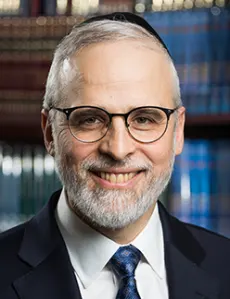Should we wear our hearts on our sleeves?
Two of the priestly garments of the kohein gadol were adorned with the name of G-d: it was engraved prominently on the tzitz, the gold frontlet that adorned his forehead, and it was also hidden within the folds of the choshen, the breastplate. This is similar to the tefillin, where G-d’s name is represented prominently and visibly on our heads via the tefillin shel rosh in fulfillment of the vision (Devarim 28:10) that “all the nations of the world will see the name of G-d associated with you” (see Menachos 35b, OC 27:11), whereas the tefillin placed on our arms near our hearts are to be a sign only for us, lecha l’os (Menachos 37b), and should ideally be covered (MB 27:47).
The implication here is that just as G-d’s name is prominently displayed on our heads so too our connection to G-d should visibly define our thinking, producing decisions and actions shaped by the truths and ethics of His word as shared in the Torah. This is not true of our heartfelt emotional connection to G-d, represented by the breastplate and the tefillin on the arm, which must be embedded within our hearts and not as visible. Our religious heart is not to be worn demonstrably on our sleeve but under it, where G-d will see it, Hashem yireh l’leivav.
What is striking, however, is that the names of the twelve tribes also appeared twice on the kohein gadol’s garments, engraved twice on precious stones, however, in this case both sets of stones were prominently visible, one on the shoulders of the kohein gadol and the other on the breastplate that lay upon his heart. Evidently, when it comes to each other, we must visibly demonstrate both the responsibility that we bear on our shoulders and the feelings in our hearts. Our care for each other should be worn on our sleeve, where they can see it, Ha’adam yireh l’einayim.
This is the structure of religious life. Our minds and decisions need to be dominated by visible reference to G-d’s word and wisdom. Our faith is preserved within us and is strongest when it is deepest. But our commitment to each other – both the bearing of active responsibility and the empathic connection – must be visibly and obviously expressed.
It is that combination of deep faith and the drive to feel for and act on behalf of each other that created the salvation of Purim. G-d’s name is not mentioned in Megillat Esther, reflecting the hiddenness of His guiding hand within that story. Instead, the Megillah is named for Esther, the person whose dedicated action and care for her people achieved their salvation.
Our story is the Purim story. Redemption will be brought by actions that reflect our Torah values, by genuine faith in Hashem implanted firmly in our hearts, and by our readiness to express in owrd and in deed our true care and commitment for every one of the tribes, every member of the broad Jewish family, carrying them prominently both in our hearts and on our shoulders.















